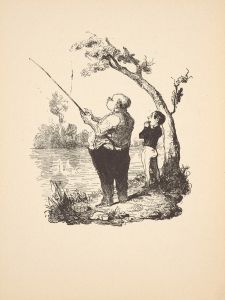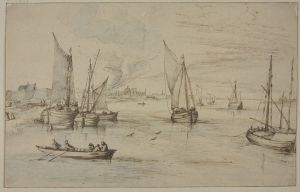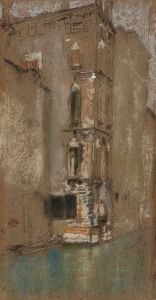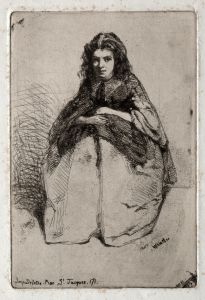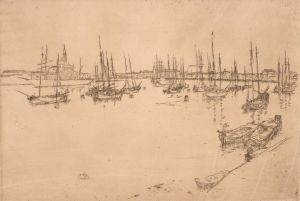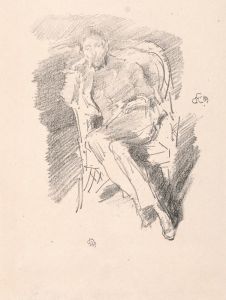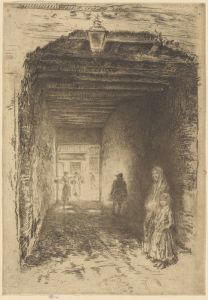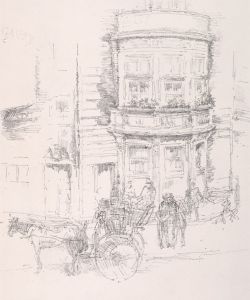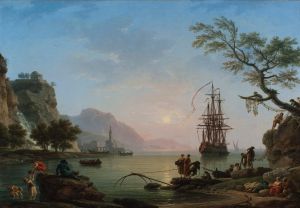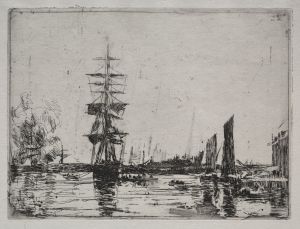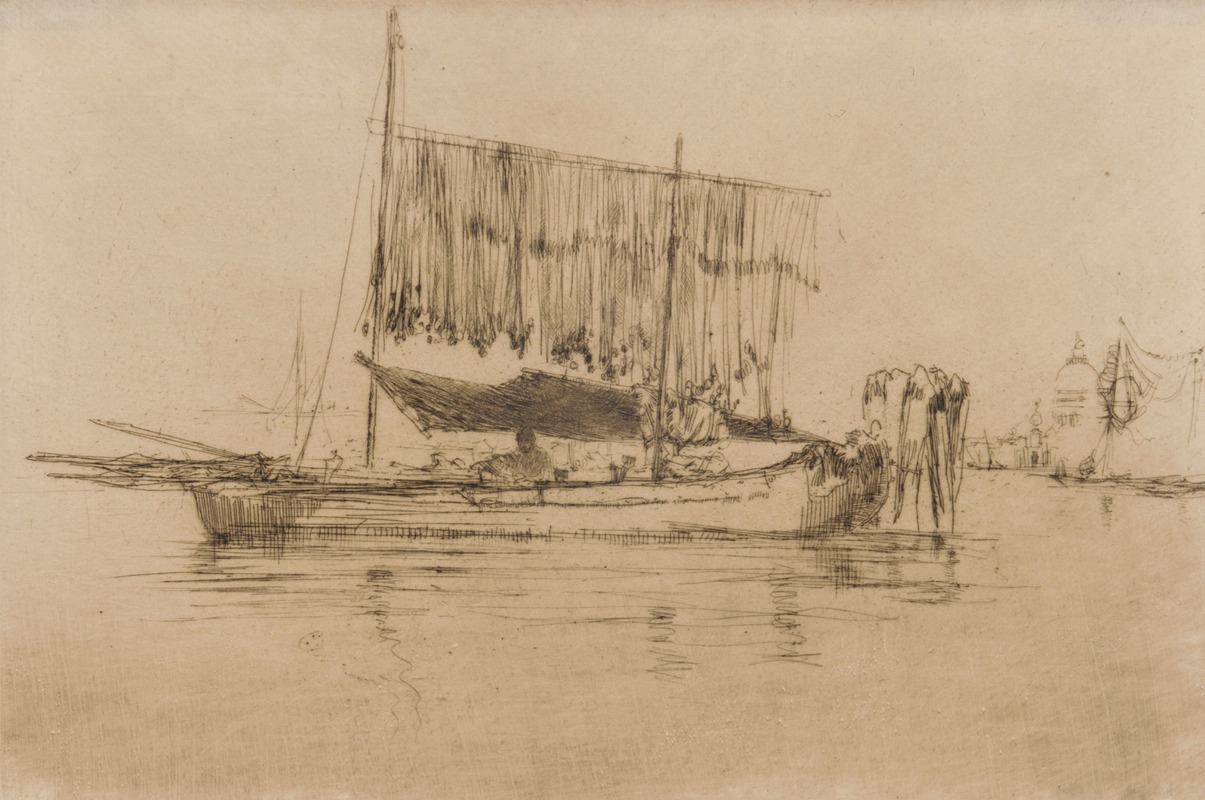
The Fishing Boat
A hand-painted replica of James Abbott McNeill Whistler’s masterpiece The Fishing Boat, meticulously crafted by professional artists to capture the true essence of the original. Each piece is created with museum-quality canvas and rare mineral pigments, carefully painted by experienced artists with delicate brushstrokes and rich, layered colors to perfectly recreate the texture of the original artwork. Unlike machine-printed reproductions, this hand-painted version brings the painting to life, infused with the artist’s emotions and skill in every stroke. Whether for personal collection or home decoration, it instantly elevates the artistic atmosphere of any space.
"The Fishing Boat" is a painting by James Abbott McNeill Whistler, an American artist known for his contributions to the art movements of Realism and Impressionism. Whistler was born on July 11, 1834, in Lowell, Massachusetts, and he spent much of his career in Europe, particularly in London and Paris. He is best known for his innovative use of color and his distinctive style, which often emphasized mood and atmosphere over detailed representation.
"The Fishing Boat" exemplifies Whistler's ability to capture the subtle interplay of light and water, a recurring theme in his work. The painting depicts a serene maritime scene, with a fishing boat gently floating on calm waters. Whistler's use of a limited color palette and delicate brushwork creates a sense of tranquility and timelessness. The composition is balanced and harmonious, reflecting Whistler's interest in Japanese art and its influence on his aesthetic principles.
Whistler's approach to painting was heavily influenced by his belief in "art for art's sake," a philosophy that emphasizes the intrinsic value of art, independent of any moral or social message. This principle is evident in "The Fishing Boat," where the focus is on the visual and emotional impact of the scene rather than any narrative content. The painting invites viewers to appreciate the beauty of the natural world and the artist's skill in rendering it.
Throughout his career, Whistler was known for his innovative techniques and his willingness to experiment with different styles and mediums. He often worked in series, exploring variations on a theme to refine his artistic vision. "The Fishing Boat" is part of a broader body of work that includes other maritime scenes, such as his famous "Nocturnes," which depict the Thames River at night.
Whistler's work was not always well-received during his lifetime, and he often faced criticism from art critics and the public. However, he remained steadfast in his artistic convictions and continued to push the boundaries of traditional painting. Today, Whistler is recognized as a pioneering figure in the development of modern art, and his paintings are celebrated for their innovative use of color, composition, and technique.
"The Fishing Boat" is housed in a private collection, and its exact date of creation is not well-documented. However, it is believed to have been painted during the late 19th century, a period when Whistler was actively exploring themes related to water and light. The painting is a testament to Whistler's enduring legacy as an artist who sought to capture the ephemeral beauty of the world around him.
In summary, "The Fishing Boat" by James Abbott McNeill Whistler is a notable example of the artist's ability to convey mood and atmosphere through his masterful use of color and composition. It reflects his commitment to the principles of "art for art's sake" and his influence on the evolution of modern art.






